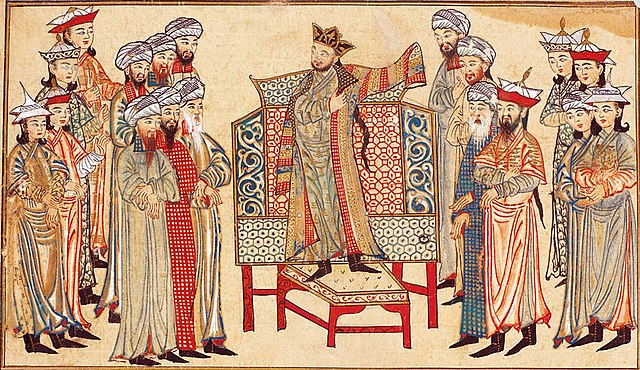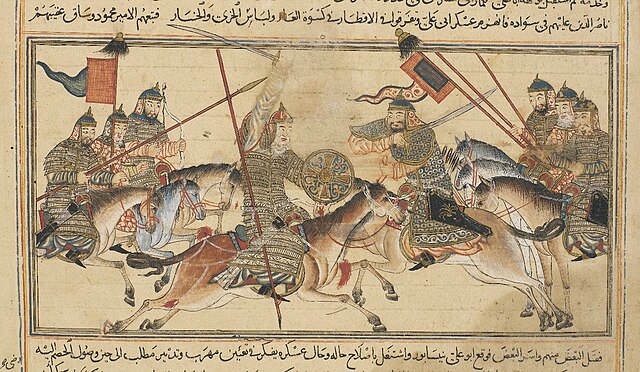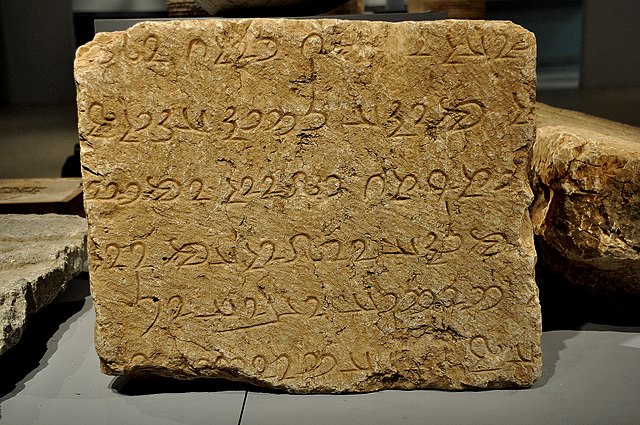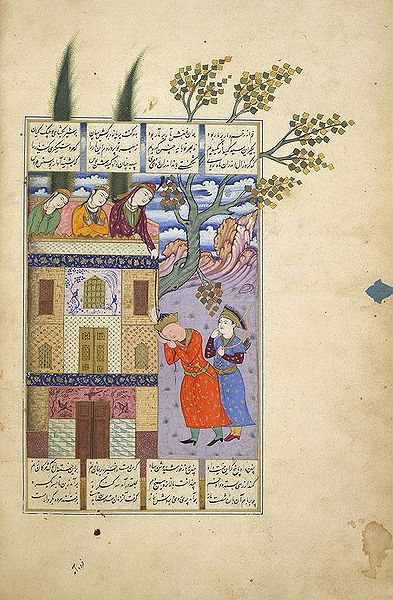Abu al-Qasim Mahmud ibn Sabuktigin, usually known as Mahmud of Ghazni or Mahmud Ghaznavi, was Sultan of the Ghaznavid Empire, ruling from 998 to 1030. During his reign and in medieval sources, he is usually known by his honorific Yamin al-Dawla. At the time of his death, his kingdom had been transformed into an extensive military empire, which extended from northwestern Iran proper to the Punjab in the Indian subcontinent, Khwarazm in Transoxiana, and Makran.
Mahmud of Ghazni (center) receives a robe of honour from Caliph al-Qadir. 1314 miniature in Jami al-Tawarikh by Rashid-al-Din Hamadani
Fight between Mahmud of Ghazni and Abu 'Ali Simjuri. Jami al-Tawarikh, 1314
Sultan Mahmud and his forces attacking the fortress of Zaranj in 1003 CE. Jami al-Tawarikh, 1314 CE.
Mahmud of Ghazni receiving Indian elephants as tribute (Majmu al-Tawarikh, by Hafiz-i Abru, Herat, 1425).
Persian, also known by its endonym Farsi or Parsi, is a Western Iranian language belonging to the Iranian branch of the Indo-Iranian subdivision of the Indo-European languages. Persian is a pluricentric language predominantly spoken and used officially within Iran, Afghanistan, and Tajikistan in three mutually intelligible standard varieties, respectively Iranian Persian, Dari Persian, and Tajiki Persian. It is also spoken natively in the Tajik variety by a significant population within Uzbekistan, as well as within other regions with a Persianate history in the cultural sphere of Greater Iran. It is written officially within Iran and Afghanistan in the Persian alphabet, a derivative of the Arabic script, and within Tajikistan in the Tajik alphabet, a derivative of the Cyrillic script.
An Old Persian inscription written in Old Persian cuneiform in Persepolis, Iran
Middle Persian text written in Inscriptional Pahlavi on the Paikuli inscription from between 293 and 297. Slemani Museum, Iraqi Kurdistan.
Ferdowsi's Shahnameh
Kalilah va Dimna, an influential work in Persian literature








